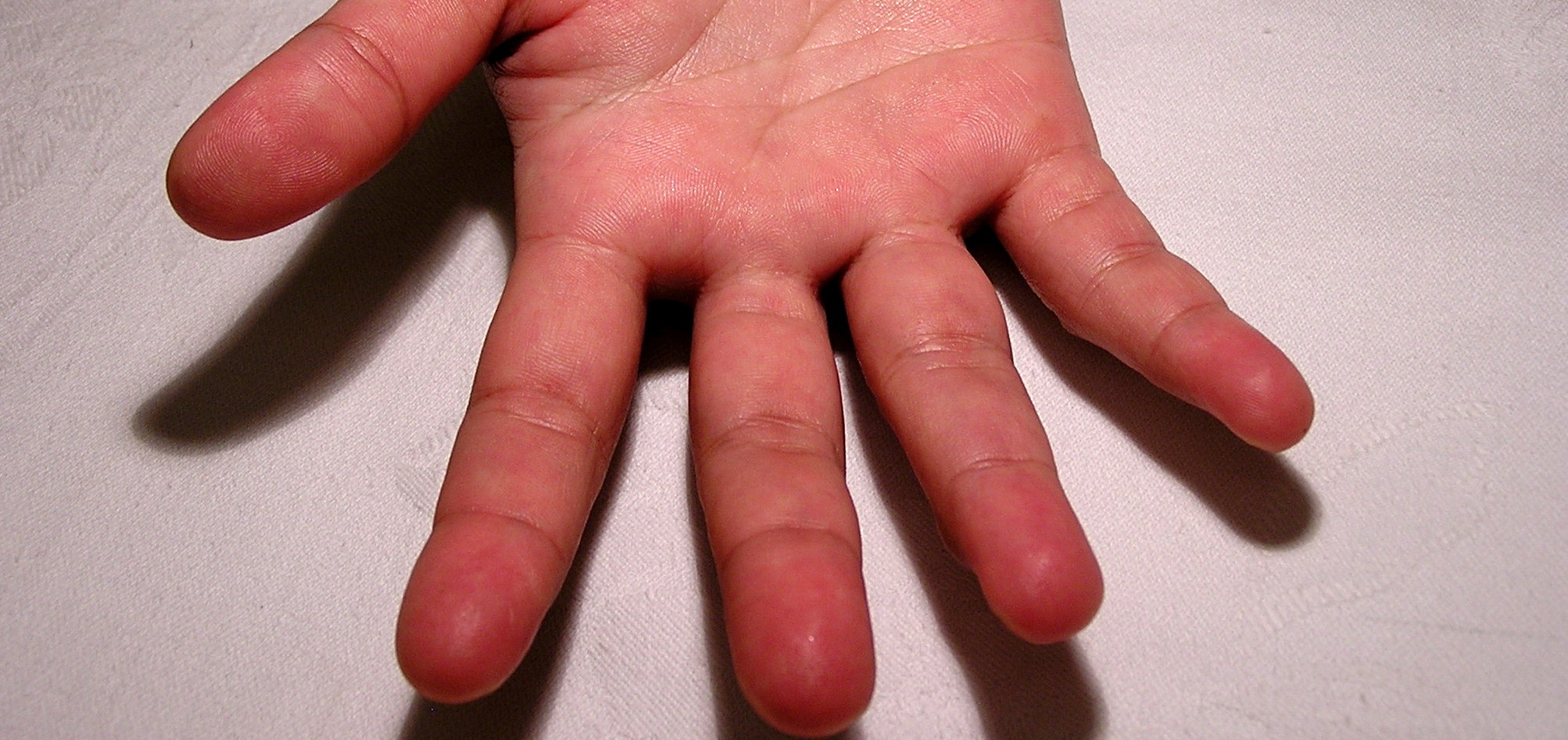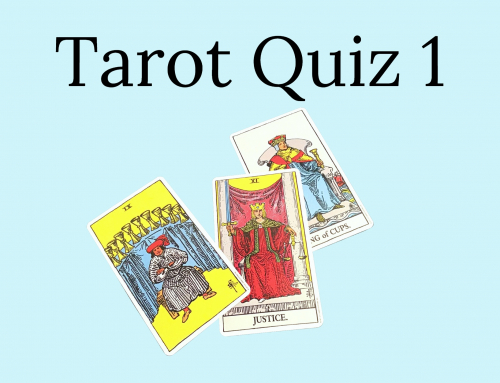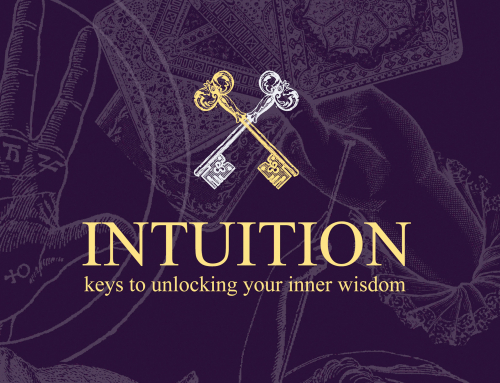About to be interviewed for a new job? Would you like a glimpse of the person interviewing you without actually asking any questions yourself? If so, take a look at the person’s hands. It’s amazing how much can be discovered about other people by a quick glance at their hands. This information can help you to know how best to approach an individual, helping personal interactions run more smoothly.
A quick glance at someone’s fingers can reveal a lot about that person’s self-confidence, sense of duty and communication skills. Fingers also indicate if the individual is more suited to detailed work or is better off managing a team while focusing on the bigger picture.
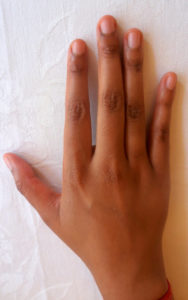 Smooth fingers don’t have noticeable knuckles. These fingers are virtually smooth from tip to base. Smooth fingered individuals are ‘big picture’ people. They can immediately see the overall plans, resulting in quick, accurate decisions. These people can multi-task with ease and are more suited to managing a team than doing detailed, repetitive work as they quickly tire of dealing with precision. They can make major decisions quickly because their first instinctive impressions are usually correct. They instantly know what they like.
Smooth fingers don’t have noticeable knuckles. These fingers are virtually smooth from tip to base. Smooth fingered individuals are ‘big picture’ people. They can immediately see the overall plans, resulting in quick, accurate decisions. These people can multi-task with ease and are more suited to managing a team than doing detailed, repetitive work as they quickly tire of dealing with precision. They can make major decisions quickly because their first instinctive impressions are usually correct. They instantly know what they like.
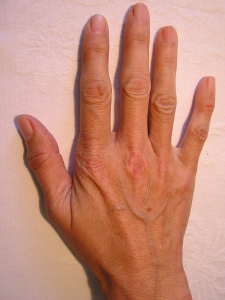 Knotty fingered people have pronounced knuckles and prefer to carefully consider details. Even amongst a messy desk, the knotty-fingered person has a system for where items are placed for quick retrieval. These individuals find it difficult to multi-task, preferring instead to focus carefully on one job at a time.
Knotty fingered people have pronounced knuckles and prefer to carefully consider details. Even amongst a messy desk, the knotty-fingered person has a system for where items are placed for quick retrieval. These individuals find it difficult to multi-task, preferring instead to focus carefully on one job at a time.
People with knotty fingers need plenty of time to make big decisions. They often research a product they want to buy, thoroughly examining the various models and distinctive features in detail before choosing. If they make snap decisions, they often regret them later. They prefer a more cautious approach.
Knotty-fingered supervisors tend to micro-manage staff, decreasing morale, whereas smooth fingered employees tend to overlook the fine detail. Sometimes a lack of meticulous precision can unravel the best laid plans. It’s important to play to personal strengths instead of attempting to be an all-rounder.
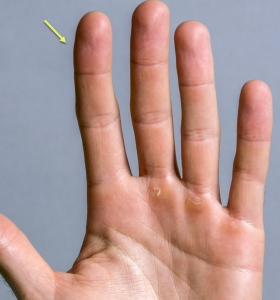 A person with a curved first finger (leaning in to the second finger) usually lacks self-confidence. This individual doesn’t fully value what he or she actually provides and consequently, gives more than is required. High achievers often have curved first fingers, making them driven to accomplish more. These people tend to make perfect employees because they routinely give more time, effort and attention to the daily tasks than is required.
A person with a curved first finger (leaning in to the second finger) usually lacks self-confidence. This individual doesn’t fully value what he or she actually provides and consequently, gives more than is required. High achievers often have curved first fingers, making them driven to accomplish more. These people tend to make perfect employees because they routinely give more time, effort and attention to the daily tasks than is required.
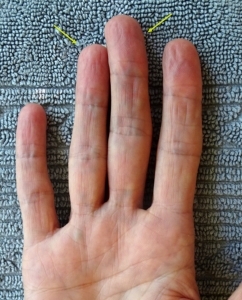 When the middle two fingers curve in towards each other the person often has a strongly developed sense of duty and obligation. This frequently occurs when responsibilities early in life demand that personal energies be invested elsewhere; for example, having to take care of younger siblings.
When the middle two fingers curve in towards each other the person often has a strongly developed sense of duty and obligation. This frequently occurs when responsibilities early in life demand that personal energies be invested elsewhere; for example, having to take care of younger siblings.
These people can find it difficult to take a break and rest during a project, for their minds are usually focused on the work that is yet to be completed. They may become uneasy when delegating tasks to others, either micro-managing or regularly checking the standard of the finished work.
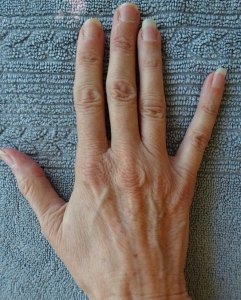 When the little finger sits apart from the others, this person usually has a separate work persona and home identity. It’s like being able flick a switch when departing the office and effectively leave unresolved work issues behind.
When the little finger sits apart from the others, this person usually has a separate work persona and home identity. It’s like being able flick a switch when departing the office and effectively leave unresolved work issues behind.
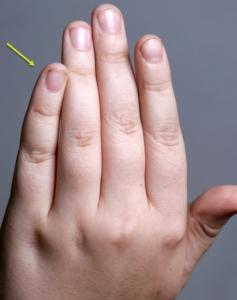 If the little finger sits close to the others or curves in towards the other fingers, this individual tends to be cautious in revealing personal feelings and emotions. Friends or partners often have to guess how this person is feeling or carefully observe clues to gauge the current emotional state. There is a tendency towards privacy and even secrecy.
If the little finger sits close to the others or curves in towards the other fingers, this individual tends to be cautious in revealing personal feelings and emotions. Friends or partners often have to guess how this person is feeling or carefully observe clues to gauge the current emotional state. There is a tendency towards privacy and even secrecy.
By casually observing the hands of people around you, it’s possible to discover how to best approach them for more harmonious interactions. Even secretive people reveal themselves to those who know where to look.
© 2019 Paul Fenton-Smith
Paul Fenton-Smith is a Sydney based palmist and author of 11 self-development books including Palmistry Revealed. Paul has studied and taught hand reading courses since 1978.
